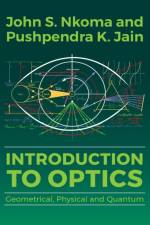- Electromagnetic, Quantum, Statistical and Relativistic Concepts
av John S Nkoma
1 057
Science and Technology are ubiquitous in the modern world as evidenced by digital lifestyles through mobile phones, computers, digital ¿nancial services, digital music, digital television, online newspapers, digital medical equipment and services including e-services (e-commerce, e-learning, e-health, e-government) and the internet. This book, Introduction to Basic concepts for Engineers and Scientists: Electromagnetic, Quantum, Statistical and Relativistic Concepts. is written with the objective of imparting basic concepts for engineering, physics, chemistry students or indeed other sciences, so that such students get an understanding as to what is behind all these modern advances in science and technology.The basic concepts covered in this book include electromagnetic, quantum, statistical and relativistic concepts, and are covered in 20 chapters. The choice of these concepts is not accidental, but deliberate so as to highlight the importance of these basic science concepts in modern engineering and technology. Electromagnetic concepts, are covered in chapters 1 to 6 with chapters 1 (Maxwell's equations), 2 (Electromagnetic waves at boundaries), 3 (Diffraction and Interference), 4 (Optical ¿ber communications), 5 (Satellite communications) and 6 (Mobile cellular communications). Quantum concepts are covered in chapters 7 to 15 with chapters 7 (Wave-particle duality), 8 (The wave function and solutions of the Schrodinger equation in different systems), 9 (Introduction to the structure of the atom), Introduction to materials science I, II, III and IV, in four chapters: 10 (I: Crystal structure), 11 (II: Phonons), 12 (III: Electrons) and 13 (IV: Magnetic materials), 14 (Semiconductor devices), and 15 (Quantum Optics). Statistical concepts are covered in chapters 16 to 19, with chapters 16 (Introduction to statistical mechanics), 17 (Statistical mechanics distribution functions, covering Maxwell-Boltzmann statistics, Fermi-Dirac statistics and Bose-Einstein statistics), 18 (Transport theory) and 19 (Phase transitions). Finally, chapter 20 (Relativity) where Galilean, Special and General Relativity are discussed.



